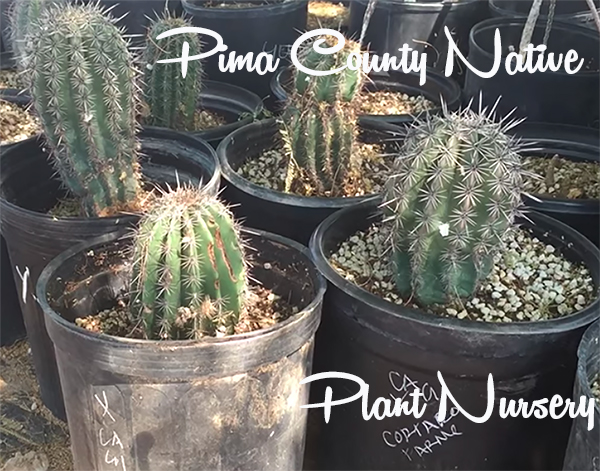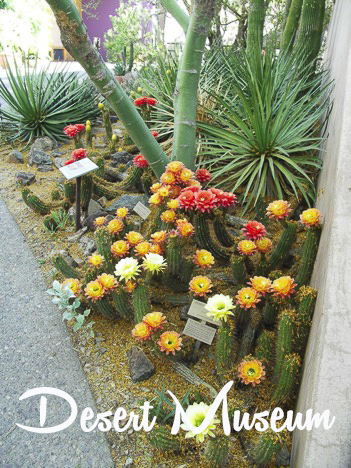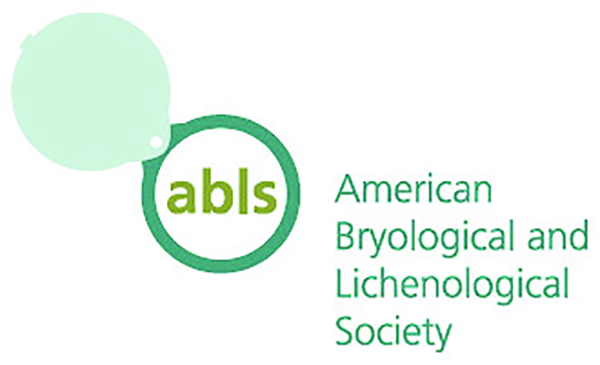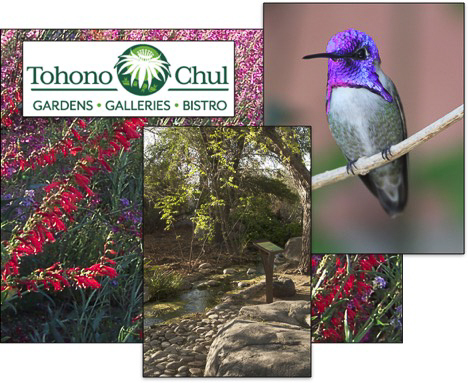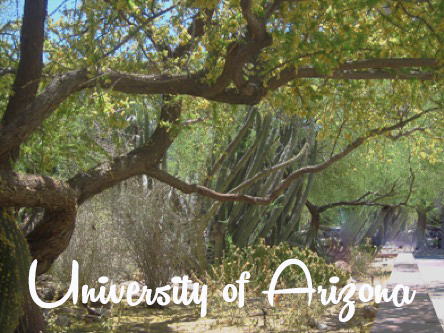

Friday - Saturday - July 26-27 Overnight Trip Saturday - July 27 Trips Sunday - July 28 Trips Post-Conference Thursday - August 1 Trips
Sunday, July 28
Pima County Native Plant Nursery
7:00 am – 9:00 am
Cost: $35.00
The Pima County Native Plant nursery grows Sonoran Desert native plants for use in public development projects. Plants are grown from wild-collected seed, pesticide- and herbicide-free, and in full sun, in preparation for a life in public landscapes. The NPN salvages plants from development projects before the desert is bulldozed, grows federally-endangered species, and is leading the effort to reintroduce native plants in southern Arizona. This tour will be an in-depth behind the scenes look at the 2-acre nursery. Nursery visitors are welcome to collect seed from our plants with permission from the PC NPN manager.
Special conditions Wear closed-toe shoes, hat, water bottle. The nursery is dirt/rocks but is mostly navigable.
Maximum Attendees: 40 people
Leaders: Jessie Byrd, Native Plant Nursery
Mount Lemmon, Santa Catalina Mountains
9:30 am – 5:00 pm
Cost: $60.00
With an elevation of 2,792m (9,159 feet ), Mount Lemmon is the highest peak in the Catalina Mountains. The peak, northwest of Tucson, can be reached in approximately 1.5 hours drive, following the winding road of Catalina Highway, through Willow and Whitetail Canyon, with some spectacular views, all the way up to the Mt. Lemmon Observatory.
The Catalina Mountains are part of the Madrean Sky-Mountain Archipelago, a region characterized by mountains in southern Arizona and northwestern Mexico, isolated from each other, emerging as de facto "islands" from the desert floor below.
The Catalina Mountains are a rugged mountain range of mostly metamorphic rock (gneiss, granite) dissected by deep and steep canyons. Catalina highway starts in the Upper Sonoran Desert northeast of Tucson, at about 910m (3,000'), a scenic vegetation of majestic Saguaro, barrel cacti, Ocotillo, low shrubs and trees, winding through intermediate elevations [1000-2000m (3,200-6,500'], with oak-juniper woodland (Bigtooth Maple, New Mexico Locust, Arizona Walnut, Gambel Oak) and riparian cottonwood trees, all the way up to mixed conifer forests (Douglas Fir, Aspen) at around [2700m (9,100')]. The curving road offers many great opportunities to stop along the way, take in the impressive scenery and views, and, venturing along hiking trails to explore an enormous diversity of habitats. The Catalina highway is great opportunity to escape the oppressive summer heat in Tucson.
Maximum Attendees: 20 People
Leaders: Jim Malusa and Joseph (Joey) Charboneau, University of Arizona
Crop Wild Relatives Conservation in the Southwest
8:00 am – 5:00 pm
Cost: $80.00
Southwest North America is a major center of North American crop wild relative diversity and has played a major role in the selection and distribution of some of our most notable crops. Several organizations in this area are committed to preserving diversity within widely used crops and among lesser known varieties, landraces, and crop wild relatives. Join the Economic Botany section for a tour of three farms that are working to conserve these important plants: 1) Almuñia de los Zopilotes (the “Experimental Farm of the Turkey Vultures”) of Gary Nabhan, a leader in preserving ethnobotanical knowledge and crop wild relatives; 2) Native Seeds/SEARCH Conservation Farm, where 200 and 350 accessions are grown on 12-15 acres to increase their seed bank and grow crops identified for specific projects.
Bring sun protection and comfortable walking shoes
Maximum Attendees: 30 people
Trip Leaders: Laura Klein, Danforth Plant Science Center
Madera Canyon, Santa Rita Mountains - ABLS Sponsored Trip
8:00 am - 5:00 pm
Cost: $80.00
Madera Canyon is located about 66 kilometers (ca. 40 miles) south of Tucson, in the upper northern slopes of the Santa Rita Mountains. The Santa Rita Mountains are part of the Madrean Sky-Mountain Archipelago; emerging from the lower basin and range of southern Arizona, bordering Mexico. The biodiversity of these "islands" is in many aspects unique. Isolation of the enclaves emerging from the desert floor resulted in the evolutionary processes comparable to those on true islands, with a diversity characterized by high endemism. Approximately 27 of the Madrean Sky-Islands are located in the US, 17 in Mexico.
Madera Canyon is a north-facing valley, climbing from the lower desert at Green Valley [ca. 800m (2700'), intersection with interstate 19] through open mesquite woodland into riparian oak woodland of the canyon [ca. 1000-1700m (3,000-5,500')], and the conifer forests below Mt. Wrightson [2881m (9,453')]. Geologically the canyon walls are largely made up of granodiorite, an intrusive igneous rock.
The area offers enormous habitat diversity: the lower canyon at Madera trailhead is characterized by easily accessible, gentle slopes, with open juniper-oak woodlands (oaks, alligator juniper, Mexican piñon pine, prickly-pear cacti). The trail soon leads into the steep canyon, where the vegetation transitions into pine-oak forest (Ponderosa pine, Gambel oak, Sumac). Ambitious hikers may even reach the uppermost canyon below Mt. Wrightson, with Douglas fir forests and Quaking Aspen.
In the summer Madera Canyon offers a great opportunity to escape from the oppressive heat of the lower desert [85°-105°F (30°-40°C)] into areas with much more tolerable temperatures [65°-85°F (15-30°C)].
Maximum Attendance: 20 people
Trip Leaders: To be Announced
Mount Lemmon, Santa Catalina Mountains - ABLS Sponsored Trip
8:00 am - 5:00 pm
Cost: $80.00
With an elevation of 2,792m (9,159 feet ), Mount Lemmon is the highest peak in the Catalina Mountains. The peak, northwest of Tucson, can be reached in approximately 1.5 hours drive, following the winding road of Catalina Highway, through Willow and Whitetail Canyon, with some spectacular views, all the way up to the Mt. Lemmon Observatory.
The Catalina Mountains are part of the Madrean Sky-Mountain Archipelago, a region characterized by mountains in southern Arizona and northwestern Mexico, isolated from each other, emerging as de facto "islands" from the desert floor below.
The Catalina Mountains are a rugged mountain range of mostly metamorphic rock (gneiss, granite) dissected by deep and steep canyons. Catalina highway starts in the Upper Sonoran Desert northeast of Tucson, at about 910m (3,000'), a scenic vegetation of majestic Saguaro, barrel cacti, Ocotillo, low shrubs and trees, winding through intermediate elevations [1000-2000m (3,200-6,500'], with oak-juniper woodland (Bigtooth Maple, New Mexico Locust, Arizona Walnut, Gambel Oak) and riparian cottonwood trees, all the way up to mixed conifer forests (Douglas Fir, Aspen) at around [2700m (9,100')]. The curving road offers many great opportunities to stop along the way, take in the impressive scenery and views, and, venturing along hiking trails to explore an enormous diversity of habitats. The Catalina highway is a great opportunity to escape the oppressive summer heat in Tucson.
Maximum Attendance: 20 people
Trip Leaders: To be Announced
FULL Arizona Sonora Desert Museum
8:00 am – 1:00 pm
Cost: $35.00
The Arizona-Sonora Desert Museum was founded in 1952, and highlights animals, plants, geology, and the natural history of the Sonoran Desert region. Our mission is to inspire people to live in harmony with the natural world by fostering love, appreciation, and understanding of the Sonoran Desert. Not a “museum” in the usual sense, it is 90% outdoors and is a composite of plant, animal, and geologic collections with the goal of making the Sonoran Desert accessible, understandable, and valued. We have over 80,000 inventoried plants (over 1,100 taxa) on our grounds. Gardens include hummingbird, butterfly & moth, bats, desert garden, agave garden, cactus garden, as well as some great plant habitat displays built into animal exhibits. Our Botany and Conservation/Education/Science departments are involved in in-situ and ex-situ research. Enjoy lunch on your own at the museum sandwich shop or Café.
Special conditions: Comfortable close-toed shoes, sunscreen, & water bottle
Maximum Attendees: 30 people
Trip Leaders: John Wiens, Matthew Jevnikar – Arizona-Senora Desert Museum
Tohono Chul Park
8:00 am – 11:30 am
Cost: $35.00
Located in northwest Tucson, Tohono Chul Park encompasses 49 acres of lush Sonoran Desert vegetation including characteristic native plants such as the saguaro cactus (Carnegiea gigantea), foothill palo verde (Parkinsonia microphylla), cholla cacti (Cylindropuntia spp.), creosote bush (Larrea tridentata), triangle-leaf bursage (Ambrosia deltoidea), and limberbush (Jatropha cardiophylla). Themed plantings entice Southern Arizona's diverse butterflies, hummingbirds and other feathered visitors, and the park's mature desert riparian zones host native endangered fish. The botanical garden was established decades ago in an area of the Tucson basin that is unusually frost free (and was, therefore, populated by orange groves), allowing the collections to include, for example, cacti and creosotes from throughout North and South America. The park also features "near-natives" - plants from the Southwest and northern Mexico that are adapted to local climatic conditions. This tour presents an opportunity to become acquainted with arid land plant diversity in natural settings and in aesthetically pleasing and environmentally compatible landscape designs, while staying at least partly shaded!
No collecting allowed
Special conditions: Sturdy footwear, hat, sunscreen, personal water bottle
Maximum Attendees: 50 people
Trip Leaders: Matt Johnson, University of Arizona Herbarium
FULL University of Arizona Campus: Herbarium, Campus Arboretum, and Laboratory of Tree Ring Research
1:00 pm – 5:00 pm
Cost: $35.00
Visit several sites of botanical interest at the University:
- Open house at the Herbarium 1:00 pm - 4:00 pm;
- Tour of the Herbarium 1:00 pm - 2:00 pm;
- Tour of Laboratory of Tree Ring Research 2:00 pm - 3:00 pm
- Tour of Campus Arboretum 3:00 pm - 4:00 pm
Some collecting may be allowed.
Special Conditions: Wear hat, sunscreen
Maximum Attendees: 25 people
Hamilton Distillers
4:30 pm – 7:00 pm
Cost: $50.00
The Hamilton Distillers produce mesquite-smoked, 100% barley, single-malt whiskeys a mere 10-minute drive of the University of Arizona campus. We will tour the distillery and malt house, and receive a guided tasting of the distillery’s uniquely Southwestern whiskeys.
The barley used in the single-malt whiskey produced at this distillery is malted over wood from the Sonoran velvet mesquite tree (Prosopis velutina), rather than the traditional Scottish peat. Their flagship Whiskey Del Bac Dorado was ranked #7 in a 2017 Esquire list of the best American whiskeys: “...Whiskey Del Bac is single-malt, 100 percent barley, and truly one-of-a-kind, like drinking a bag of Barbecue Lay's.”
Special conditions: During summer it can get quite hot in the distillery, so please dress and plan accordingly. The distillery is not air-conditioned, and temperatures at this time of year can exceed 100F.
- All are welcome to attend tours, but only those 21 years of age and older may sample the whiskey.
- Close-toed shoes are recommended but not required.
- Hamilton has two distillery cats, Masher and Two-Row. They’re very friendly, but please be wary of this if you cannot tolerate cats.
Tour cost includes a whiskey tasting – please bring an ID
Maximum Attendees: 25 people
Trip Leader: Alison Harrington, University of Arizona
